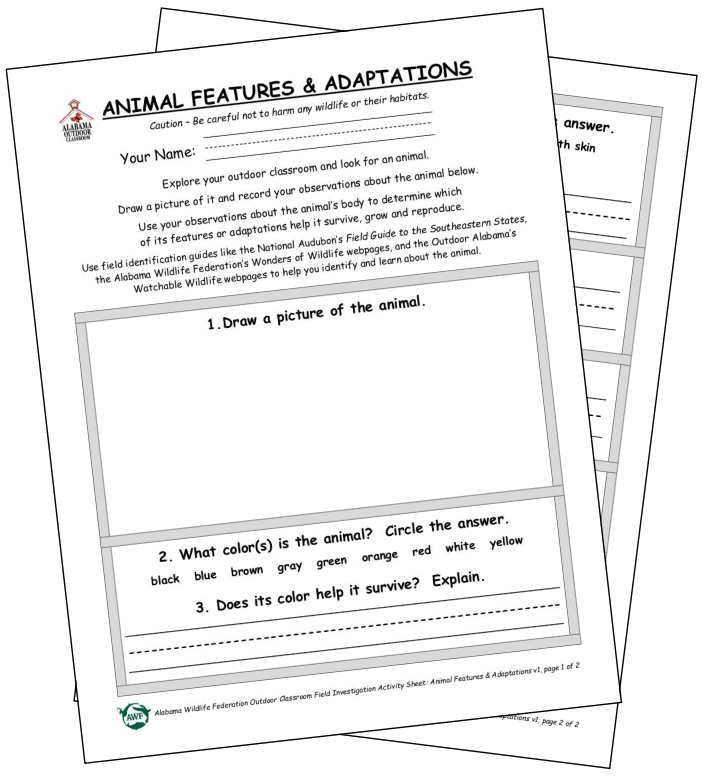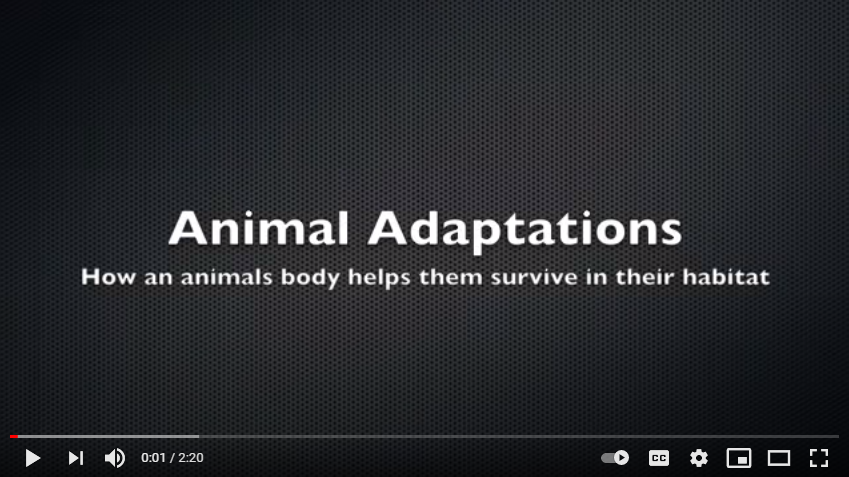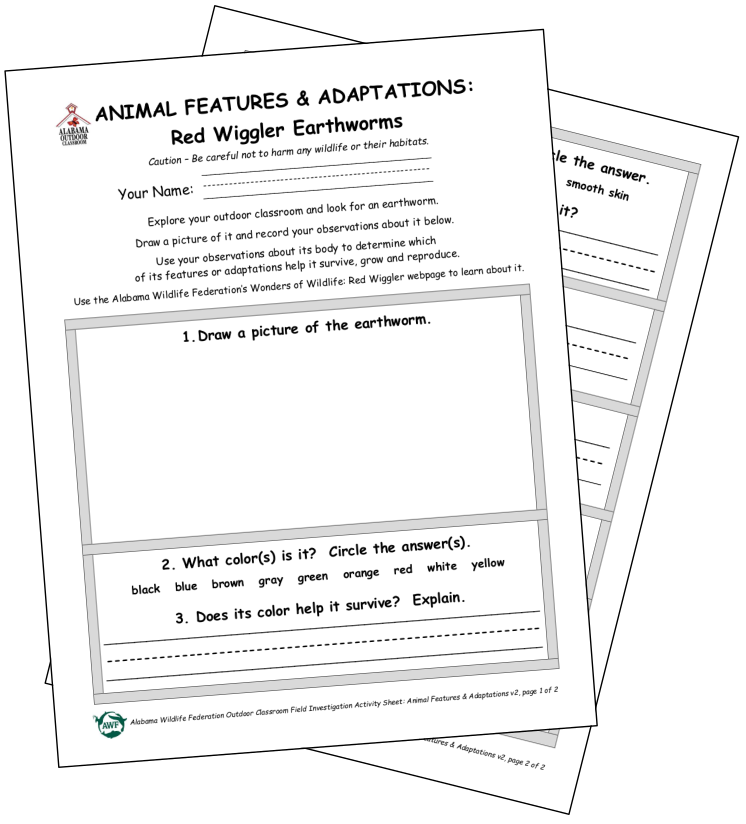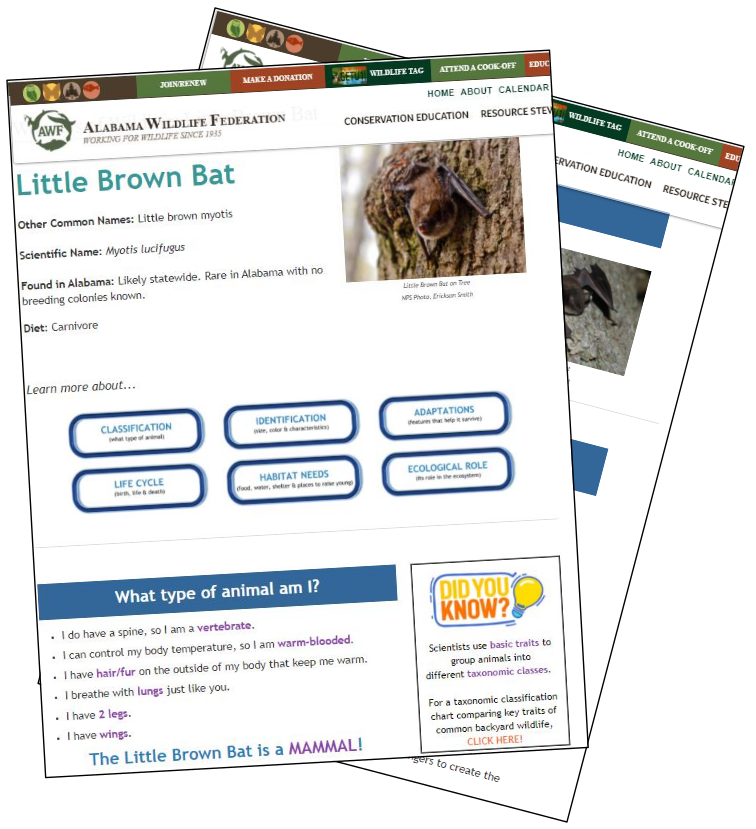Field Investigation: Animal Features and Adaptations
Students will observe an animal and use their observations to determine which of the animal’s features or adaptations of its external body parts help it survive, grow, and reproduce.
Questions? Contact us at oc@alabamawildlife.org. .
| Click on the orange links to access free educational materials: Lesson Plans | ALSDE Standards Taught |
|
| Activity Page #1: General Animal (or as Word Doc) Activity Page #2: Red Wiggler Worms (or as Word Doc) with Answer Page #2 |
|
| Outdoor Activity Materials: activity pages, clipboards, pencils, magnifying glasses, and copies of field identification guides such as the National Audubon Society Field Guide to the Southeastern States |
|
Step 1: Engage through Discussion
|
|
| Engage the students and capture their interests with an Interactive PowerPoint and Q&A (or as a PDF) that allows you to click through the questions and answers separately, so that you have time to discuss possible answers with your students BEFORE showing them the answer on the slide. You can gauge your students' understanding of the topic as they answer the questions. |
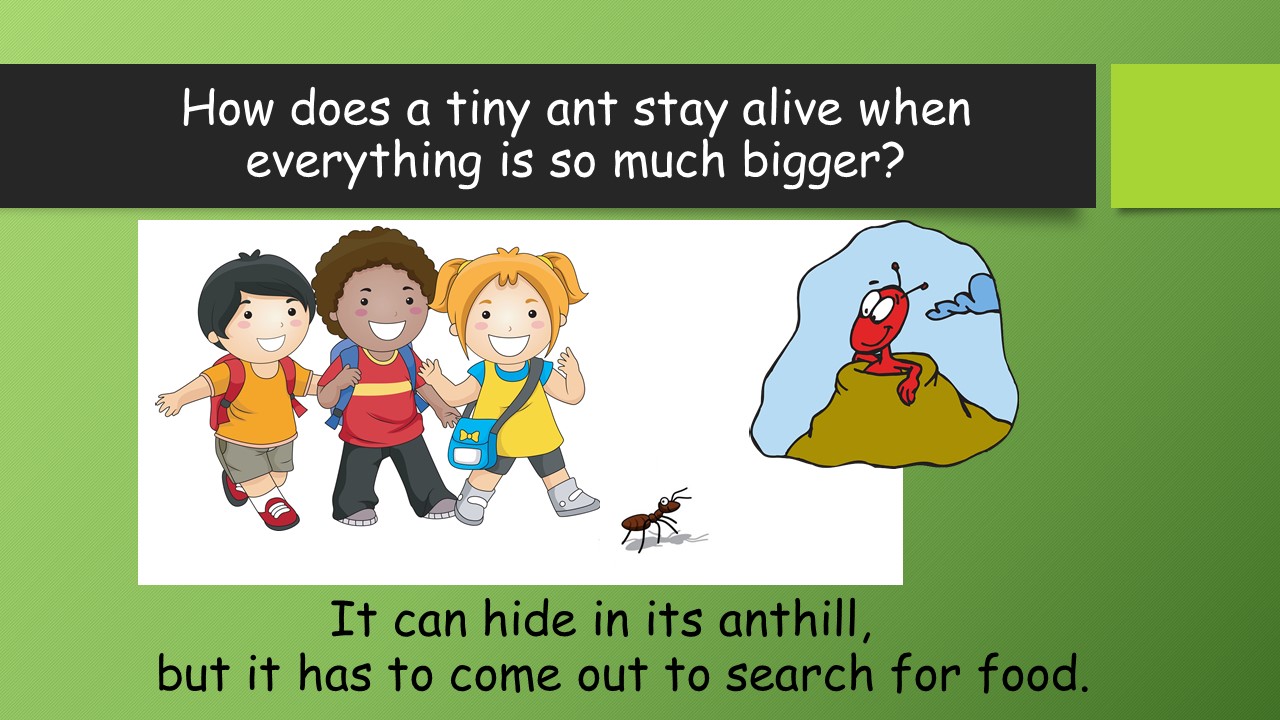 |
| Tip #1: Print and use the Q&A Info Sheet (or as Word Doc) to anticipate the next question in the Interactive Q&A and to guide the conversation with the students. Tip #2: To use the PowerPoint (PPT) for an interactive discussion, you must click "Slide Show" & "From Beginning" to display the questions and answers separately. |
|
Use these tools to continue the discussion: |
|
|
Step 2: Explore with Literature
|
||
| As you read these books, you can further explore the topic and discuss your students' experiences and knowledge around the topic: Animal Features: 25 Animals Explain Why They Look the Way They Do by Steve Jenkins (ISBN: 978-0544233515) What Do You Do with a Tail Like This? by Steve Jenkins (ISBN: 978-0618997138) YouTube Video of What Do You Do with a Tail Like This? - Read by Aloud by Mrs. James What if You Had Animal Eyes? by Sandra Markle (ISBN: 978-1338101089) What if You Had Animal Feet? by Sandra Markle (ISBN: 978-0545733120) What if You Had Animal Nose? by Sandra Markle (ISBN: 978-0545859226) What if You Had Animal Ears? by Sandra Markle (ISBN: 978-0545859264) |
 |
|
|
|
||
|
Step 3: Explain with an Educational Video
|
||
| Use this educational video to help explain the topic in more detail: Animal Adaptations YouTube Video (2:20 min) @ https://www.youtube.com/watch?v=fRX2JtKFUzk |
||
| Step 4: Elaborate with a Field Investigation in the Outdoor Classroom | |
| Students apply what they have learned as they investigate the topic in your outdoor classroom and record their real-world observations on their activity page: | |
| Version #1: General Animal |
Version #2: Red Wiggler Worms |
Activity Tip:
|
|
| Version #1 - Animal Features and Adaptations: General Animal Activity Page: PDF (as is) / Word Doc (editable) Procedure Outdoor Discovery:
Optional Extensions:
|
|
| Version #2 - Animal Features and Adaptations: Red Wiggler Worm Activity Page: PDF (as is) / Word Doc (editable) Procedure Outdoor Discovery:
|
|
Indoor Discussion:
|
|
| Step 5: Evaluate with an Assessment Activity | ||
| Review and assess the students’ observations and answers on their observation pages: | ||
Evaluate the students' understanding of the topic with the following assessment tool:
|
||
Questions? Contact us at oc@alabamawildlife.org. .
 Wildlife Tag
Wildlife Tag
